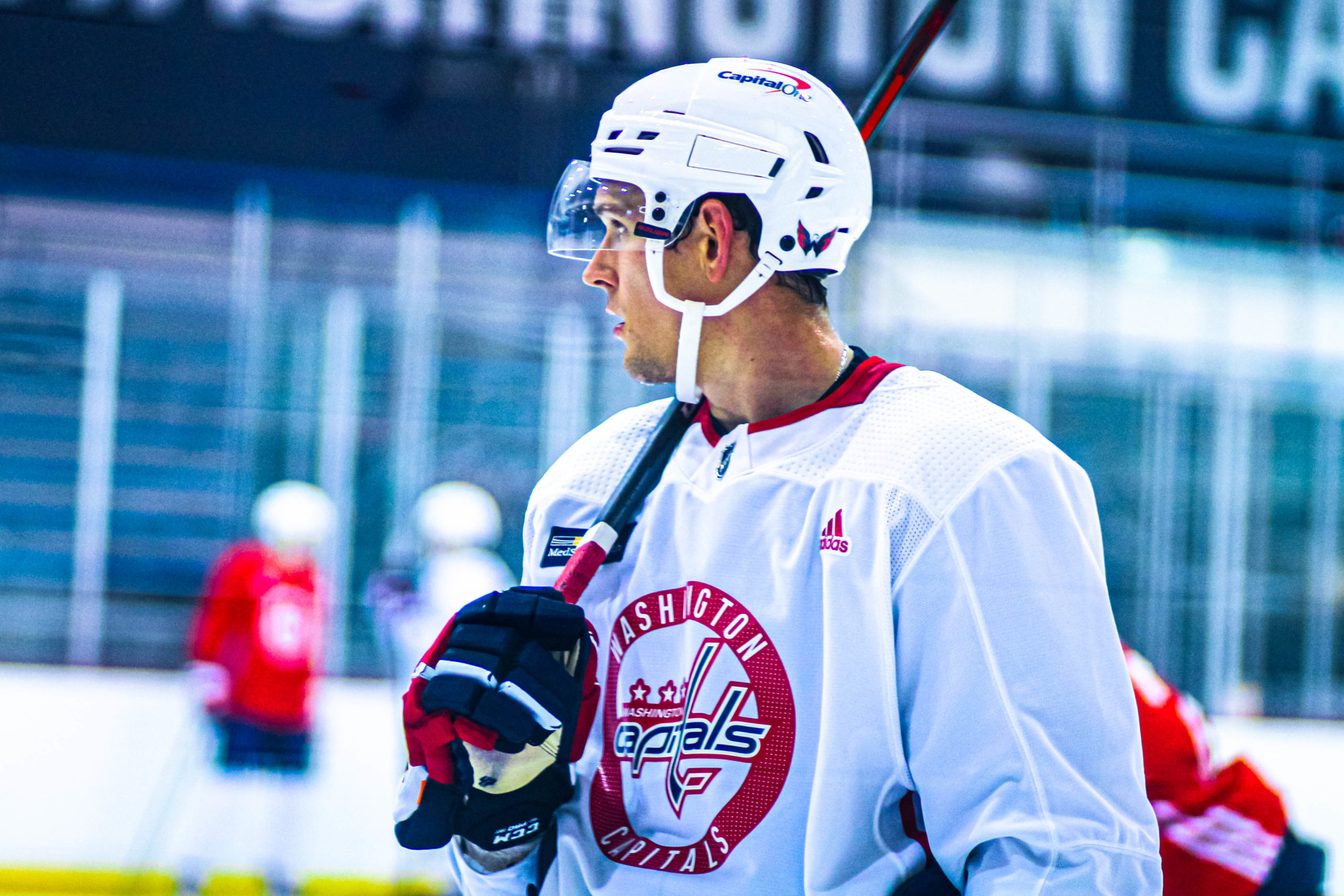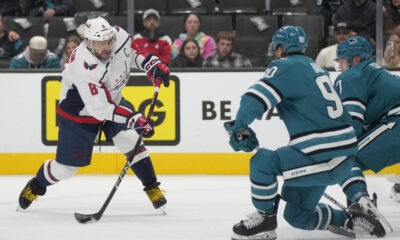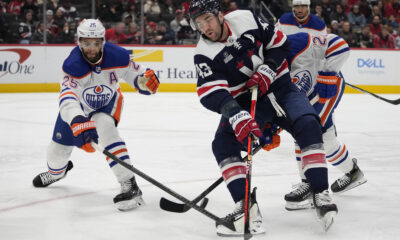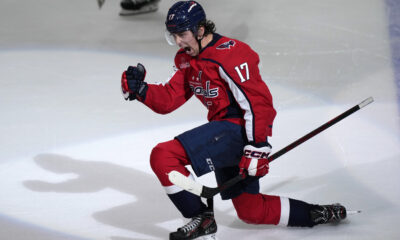Capitals Features
After Tough Achilles Injury, Malenstyn ‘Prepared To Tackle Any Obstacle’ For Capitals

WASHINGTON, D.C. – It’s been a long road for Washington Capitals winger Beck Malenstyn over the last year. But in the end, it’s all in the past for the laid-back forward, who’s simply just happy to be here.
The 23-year-old came face-to-face with adversity just a winter ago. While training in Vancouver, B.C. with the Capitals training camp just weeks away — and a roster spot ready for the taking — Malenstyn suffered a torn Achilles that ended his year and chance to make the NHL jump.
“It was tough. I think when you get injured, it’s never easy, especially when it’s something that you have to do, right?” Malenstyn explained. “Like, you’re trying to prepare yourself for a season, then it ends up taking you out of one. So it was mentally challenging for me, absolutely.”
Malenstyn also said those circumstances, tied in with a global pandemic, posed a whole other obstacle. To respond, he had to approach the situation with a new mindset. That meant focusing on family and a slow but steady recovery process.
“I’ve never had to recover from an injury that long at any time in my career… At times, I probably felt even more isolated because I just couldn’t be around as many people,” Malenstyn said, adding, “As much as it was a challenge, I think for everybody in the world, as far as the rehab standpoint, it probably allowed me to have a lot more flexibility in my schedule to do things consistently throughout the week.
“I think it allowed me to grow mentally a lot, too, and just showed me how much I love playing the game and how badly I missed it when I was away from the team for that long,” Malenstyn explained. “It was a long road to recovery. I had a great rehab team helping me in Vancouver, which made it a whole lot easier, and I was able to just kind of take it week by week, which made it go by a lot quicker.”
READ MORE ON WHN: Capitals’ Backstrom Opens Up About Hip Injury, Emphasizes Patience
It took about six months for Malenstyn to get back on the ice. In the meantime, he spent time at the pool and in the gym to reach the point where he was comfortable with skating again.
In addition to his rehab, he skated with the midget team at home before training with the pros in the offseason. He also inked a one-year, two-way extension with Washington and got married over the summer.
“I think the biggest lesson you can kind of take from it is you can never really expect anything. Anything can come at you at any time, and you just need to be mentally prepared to tackle any obstacle that gets thrown your way. It was a tough balance for me, but I’m really fortunate to be happy and healthy back playing here. You know, just back to myself.”
Right now, Malenstyn is one of a few young prospects remaining at training camp, and there are still 10 more cuts to be made over the next week. As the Capitals’ season opener looms, there isn’t a lot of flexibility or vacancies. There can only be 23 skaters, and with centers Hendrix Lapierre and Connor McMichael making a case to fill Nicklas Backstrom’s void, an extra spot will be hard to come by.
RELATED: Capitals Make Statement, Cut Pheonix Copley To Reduce Roster To 33
For Malenstyn, though, he’s ready to “hit the ground running” and fight for a promotion. He’s been making a reasonable case in the preseason in ways beyond offense. Malenstyn has been a consistent physical presence, leading the team with 12 hits so far. He had seven in the team’s opener vs. Boston. He mainly played in a bottom-6 role and also played a key role while shorthanded.
“Obviously, there’s a lot of built-up energy after taking the entire year off,” Malenstyn noted. “I was really excited to get back into a game, but the body felt great. It was kind of a nice feeling to have all those sores and aches after I missed that a little bit. Everything’s been feeling really well.”
Head coach Peter Laviolette also took notice of Malenstyn’s gritty style and mentioned he’s getting a better sense of what the team wants to accomplish offensively.
“I thought he was really noticeable with his physicality. he popped some bodies on the forecheck [against Boston], he was able to get in, cycle the puck, turnover pucks, create havoc in the offensive zone,” Laviolette said, adding, You can see those guys have maturity… now they’re trying to do their best to crack the lineup here.”
READ MORE ON WHN: Lapierre Goes From Long-Shot To Shortlist For Capitals
The 6-3, 200-pound forward is sticking with his game plan. He worked on his skill game but wants to maintain his role as the big-bodied, gritty and reliable forward who can create space and battle hard, whether it’s on the PK or at 5-on-5.
“I try to have a really clear identity on how I play,” Malenstyn said, adding, “I want to be that guy that’s first on the forecheck turning pucks over, reliable on the penalty kill,” Malenstyn said. “The biggest thing for me is just continuing to create offense within my game. I don’t need to be a guy who’s beating three guys in the corner coming in and making a play. It’s using my size, using my speed, getting pucks to the net and then finishing those opportunities when I’m around there.
“I’m often in those positions in the corners and in puck battles, [and I focused on] how can I pull myself out of that area with a) possession of the puck and b) awareness and time to make plays… I wasn’t working on coming in and beating people 1-on-1 all the time because it’s not realistic for my game. It was, ‘How can I create more offense with the situations that I find myself in?'”
Overall, Malenstyn said he’s feeling good and is ready to make a difference, whether that be up D.C. or down in the AHL with Hershey. In 2019-20, he played three games with Washington, recording five hits, one block, one takeaway and four shots. He also played 46 games with the Bears, dishing seven goals and 15 points.
“The biggest thing for me is just continuing to stay comfortable and confident,” Malenstyn said. “I put the work in on those kinds of areas and then try to translate them into games.”












